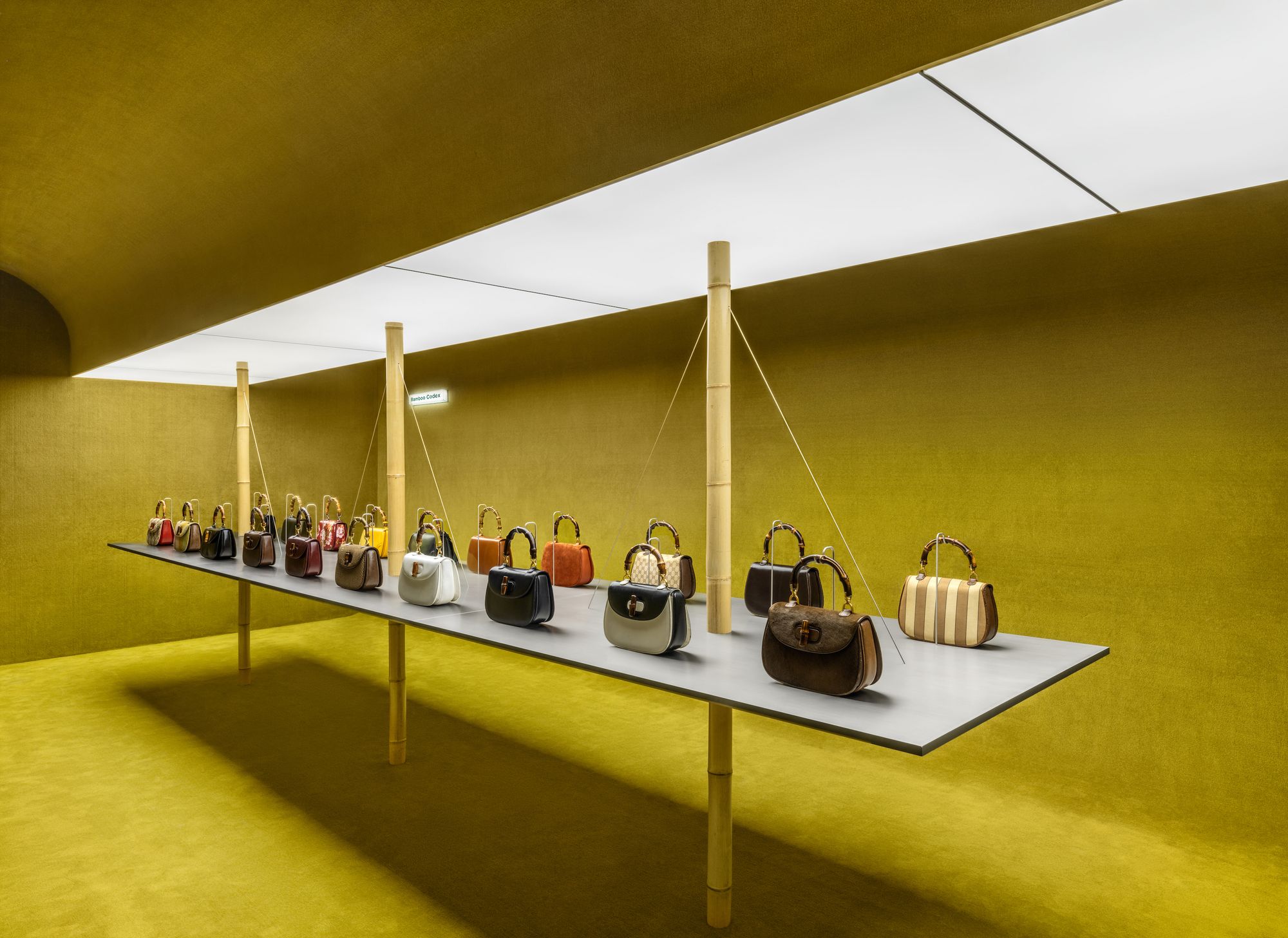Gucci's "Gucci Bamboo: Decoding an Icon" exhibition in Shanghai celebrates the enduring legacy and future of the Bamboo bag.
By Cultural Affairs Editorial Staff
Gucci has unveiled its latest exhibition, "Gucci Bamboo: Decoding an Icon," at Shanghai's historic Sunke Villa. Opening on March 28 and running until April 6, this immersive showcase pays tribute to the legendary Gucci Bamboo 1947 bag, exploring its rich history, meticulous craftsmanship, and cultural significance.

Curated by Ippolito Pestellini, founder of interdisciplinary agency 2050+, the exhibition offers visitors a multidimensional journey through seven distinct rooms across two stories. "The resulting exhibition is a collection of stories that intersect past and present, natural elements and artisanship, and a design history that is both everlasting and mutable," Pestellini explained.
The exhibition begins with a suspended bamboo installation honoring the material's symbolic origins in resilience and renewal, particularly its deep connection to Chinese culture. Historical botanical illustrations by European explorer James Bruce and Renaissance botanist Wolfgang Meyerpeck are displayed alongside an evocative AI-generated video by artist Christian Kondić, bridging traditional and contemporary perspectives.
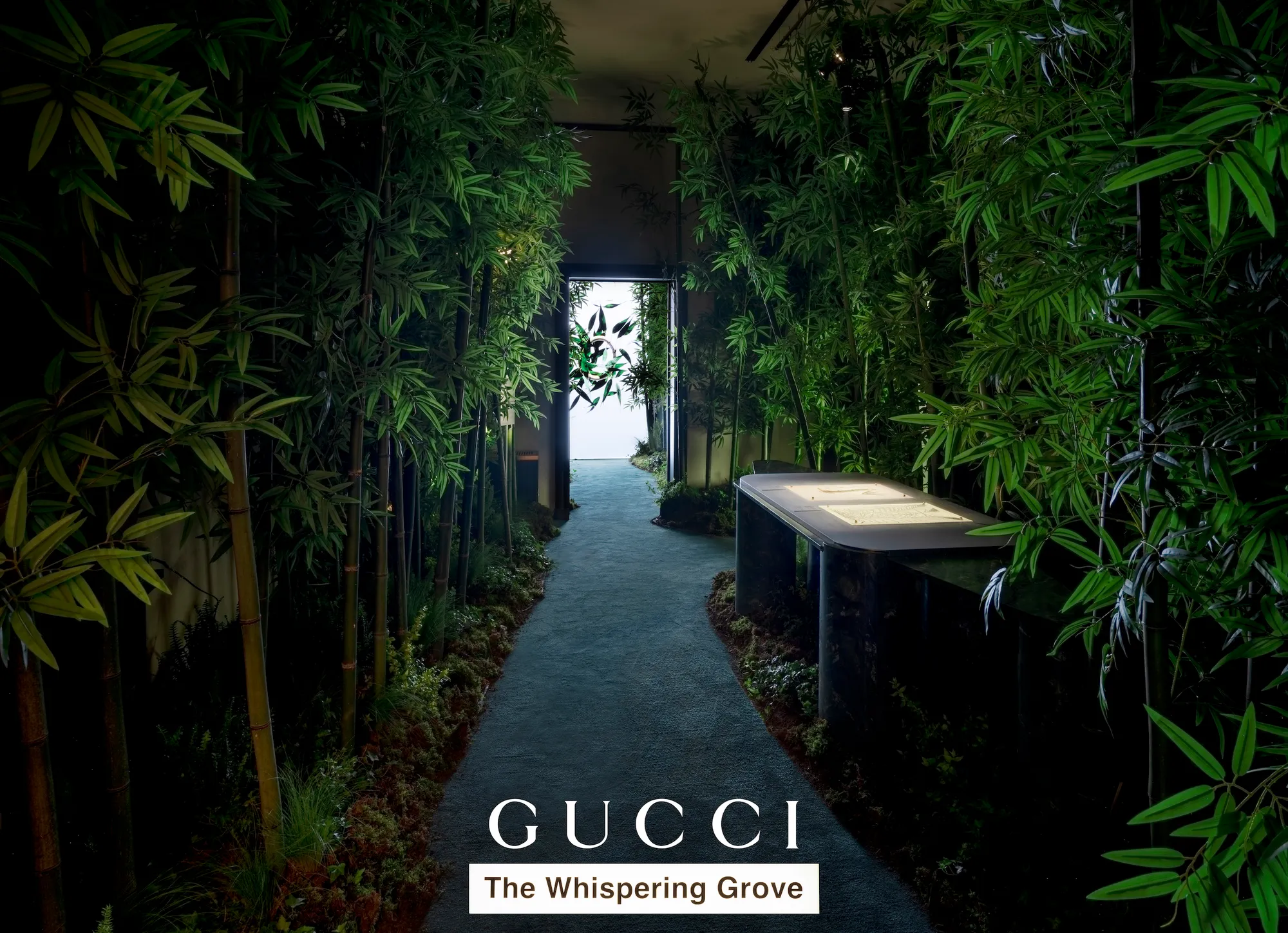
Moving deeper into the exhibition, "Anatomy of a Bag" reveals the extraordinary craftsmanship behind the iconic accessory, showcasing its 13-hour, 428-step creation process in a laboratory-like setting. Visitors can observe skilled artisans from Gucci's ArtLab in Florence assembling and polishing the bags in real time, while screens display Davide Rapp's film capturing the rhythmic precision of their work.

The "Bamboo Codex" section presents a chronological timeline of the bag's 70-year evolution. While maintaining its signature elements—the saddle-shaped silhouette, Turlock bamboo closure, and distinctive handle—the exhibition highlights how successive creative directors have reimagined its exterior over decades.
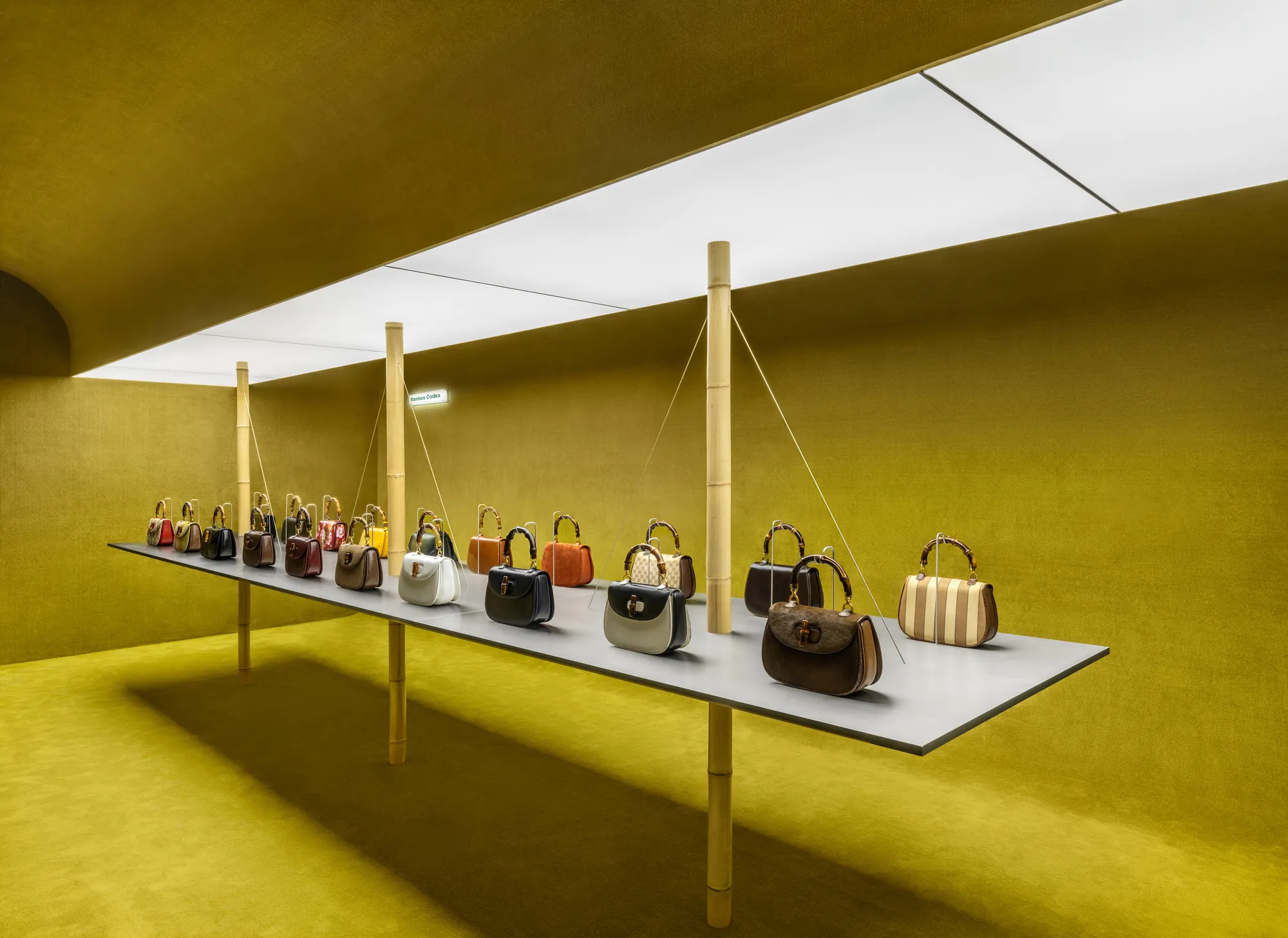
In "Thread of Connection," visitors witness bamboo's influence across Gucci's broader design language, with archive pieces including Frida Giannini's bamboo-striped pencil dress and a Tom Ford-era Gucci bamboo watch, complemented by Sybil Montet's CGI installation transforming Gucci silk scarves into ephemeral digital experiences.
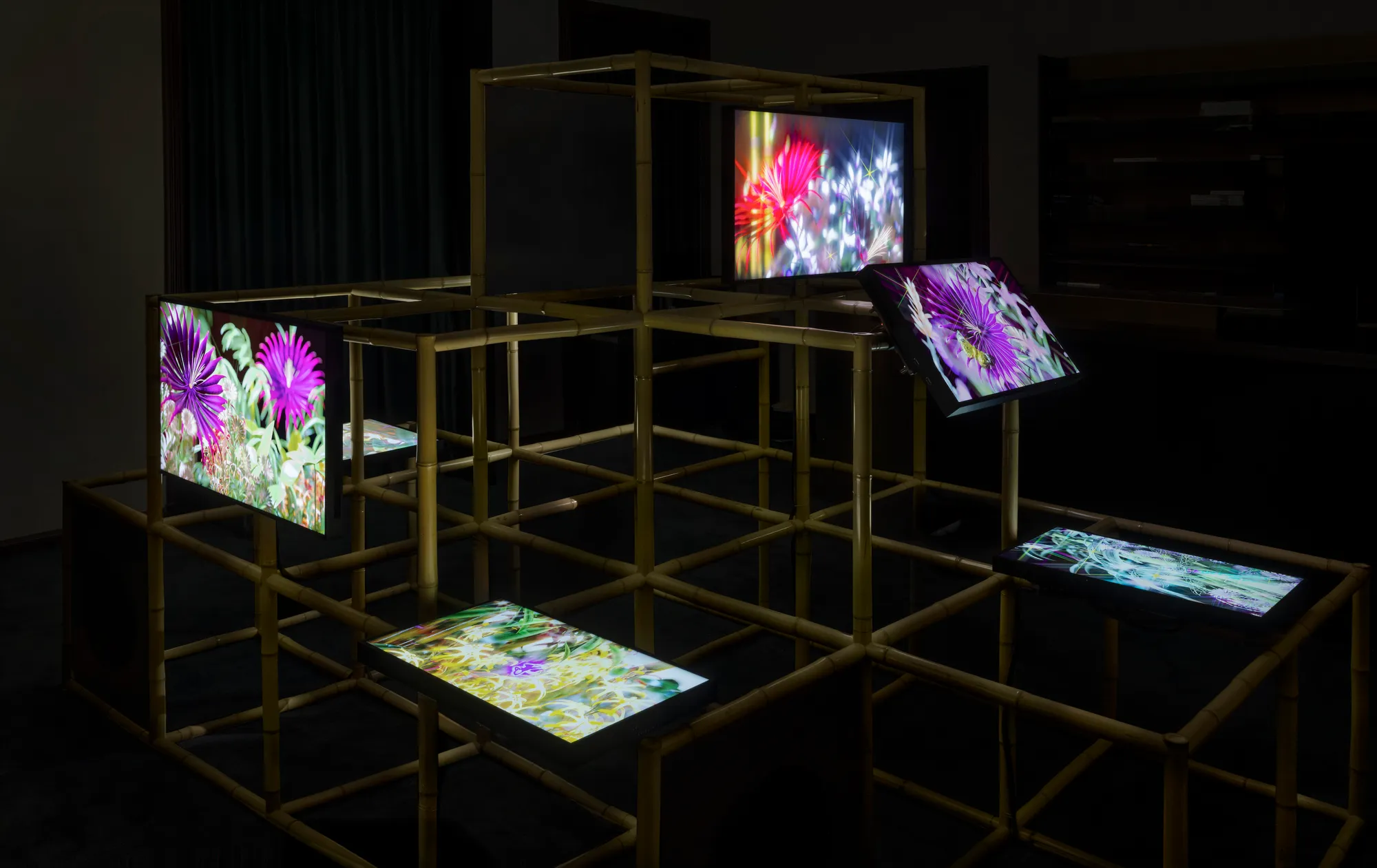
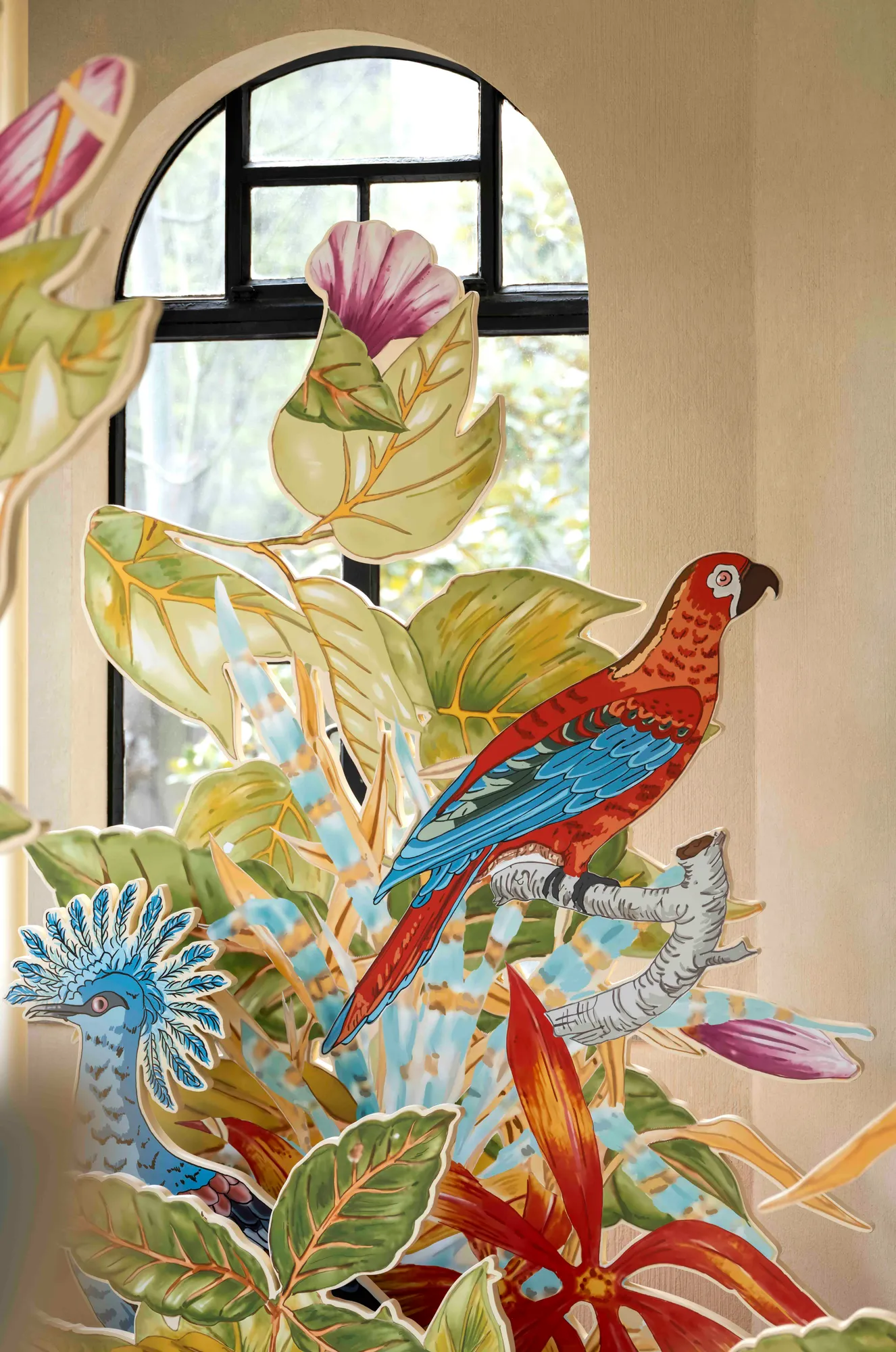
The exhibition embraces contemporary digital art in "Metamorphosis," where multidisciplinary artist Francesco D'Abbraccio presents a continuously morphing bag that shifts between forms—from floral handbag to kettle to gaming gadget—while maintaining its iconic bamboo handle.
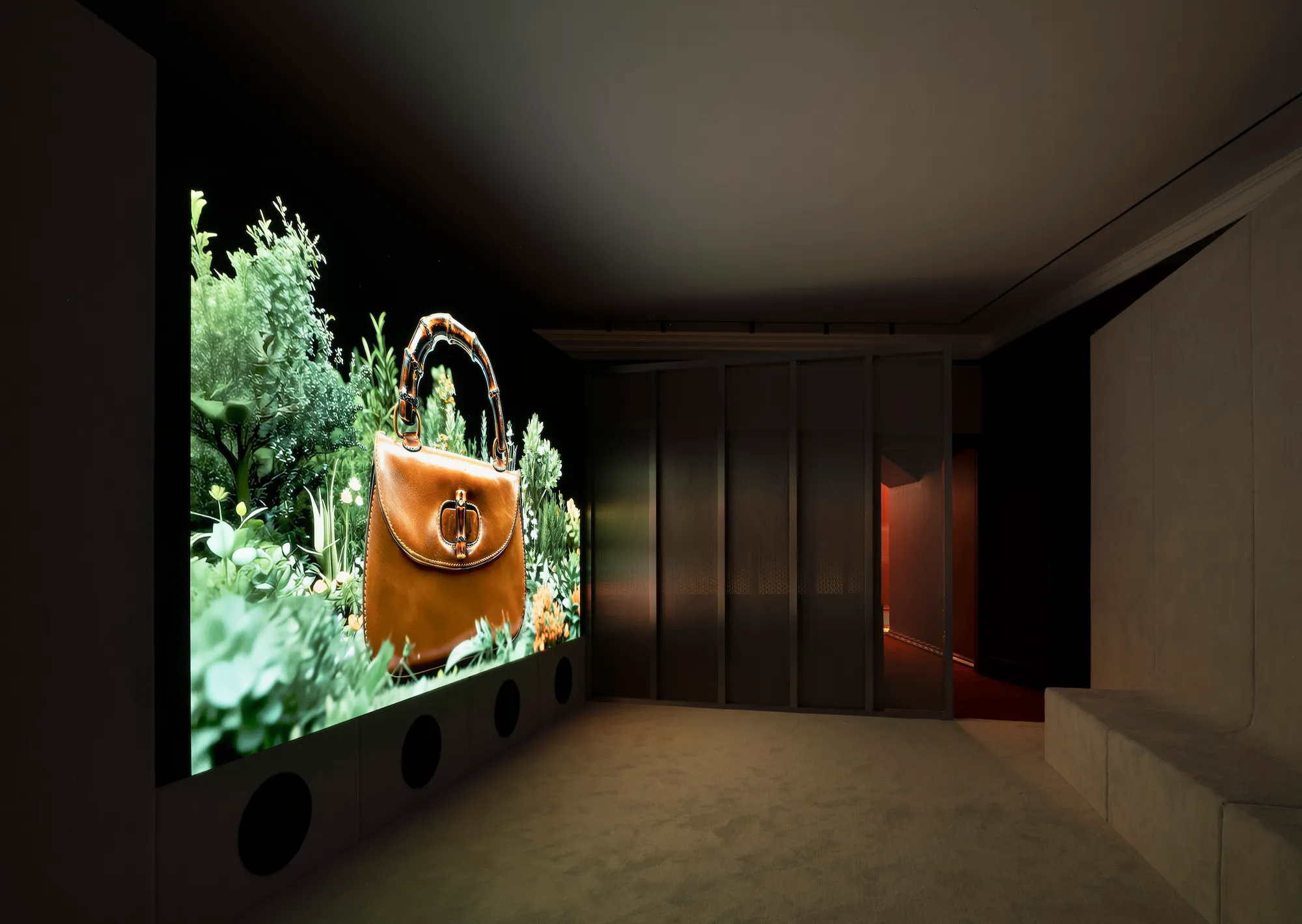
In the final room, "The Shape of Tomorrow," visitors enter a David Lynch-inspired space painted in Ancora red, where bamboo is reimagined in athletic forms—barbells, dumbbells, a pommel horse, and climbing ladders—suggesting potential new directions for the luxury house.
The exhibition also features the work of 19-year-old Chinese sculptor Yanran Chen, known for blending body horror and surrealism. Her four figurines, possibly self-referential alter egos, carry miniature bamboo bags while modeling looks from recent Gucci collections.
A star-studded opening event attracted Chinese celebrities and influencers, including actor Ziyi Zhang, Gucci ambassadors Wen Qi, Zhang Linghe, and Song Weilong, along with emerging actors, models, and athletes. Guests had exclusive access to shop a special collection of Bamboo bags and accessories.
In Chinese culture, bamboo has long symbolized humbleness, nobility, and perseverance—values reflected in Gucci's enduring design philosophy. By hosting this exhibition in Shanghai, the luxury house acknowledges these cultural roots while demonstrating how traditional craftsmanship continues to inspire contemporary fashion innovation.
The exhibition is free to the public, with visitors able to secure slots through WeChat's Mini Program.
